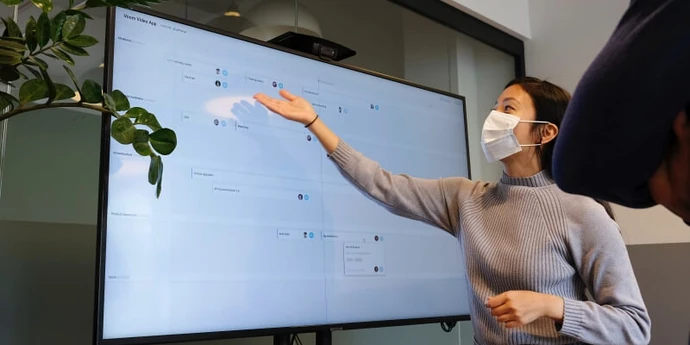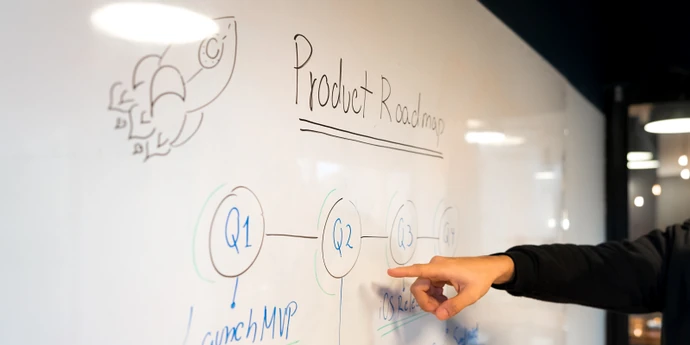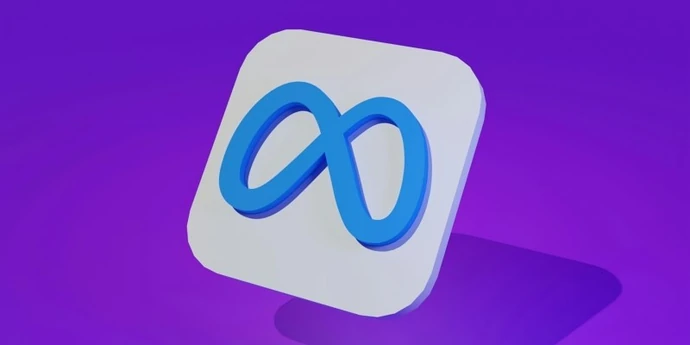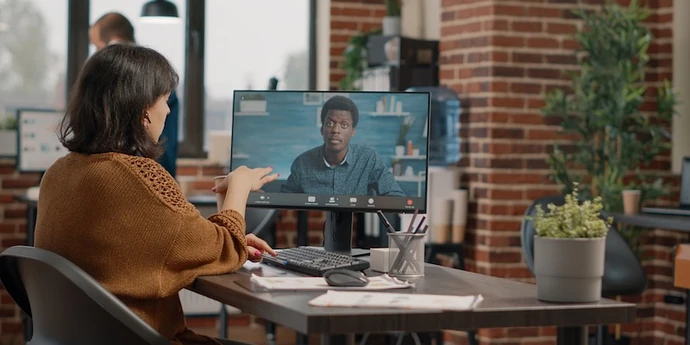Don’t underestimate the Stripe product manager interviews. The process is known to be quite rigorous, with challenging questions that are specific to the company.
Expect interviewers to ask you behavioral product sense, product execution, and technical questions. And be prepared to show off your systems thinking, user empathy, and technical curiosity.
Sounds daunting? The good news is that the right preparation can make a big difference.
That’s why we’ve prepared this ultimate guide. To put it together, we talked with Halim, current Stripe product lead and IGotAnOffer coach, reviewed real candidate reports, and gathered insights from Stripe insiders online.
Below, you’ll find a detailed breakdown of the interview process, some sample questions, and expert tips—everything you need to walk into each round with confidence.
Click here to practice 1-to-1 with PM ex-interviewers
Let’s get started.
1. Stripe product manager role and salary↑
Before we cover your PM interviews at Stripe, let's take a quick look at the role itself.
Stripe provides internet-based financial services to a range of users: from big enterprises that need secure payment processing; freelancers and small business owners who use Stripe to invoice and receive payment from clients; to online retail customers looking for a trusted payment platform.
As a Stripe product manager, you’ll be responsible for building products for any of these users, balancing user-centricity with business objectives.
Stripe has different teams and domains where you could function as a PM: Payments, Platform, Banking as a Service, Revenue and Financial Automation, Infrastructure, Risk, and New Financial Products, etc.
Within your domain, you’ll work closely with engineers. Therefore, you’ll have to be comfortable with deep technical concepts. “You’re expected to understand architectural tradeoffs, API design principles, and backend implications,” Halim (Stripe product lead) says.
You’ll also collaborate closely with other functions, including design teams, finance, customer-facing teams, risk and fraud management teams, and even legal.
Stripe has a high ownership culture, with PMs operating as mini GMs. “You’re expected to define your own scope, create alignment across teams, and push projects forward without a lot of top-down direction,” Halim says.
1.2 How much does a Stripe product manager make?
Based on Glassdoor data, the average total pay for a Stripe product manager is $310k per year, 52% higher than the estimated average total pay for a US product manager.
Below you can see the average salary and compensation of the different product manager positions at Stripe US, as of April 2025, based on Levels.fyi data:

Ultimately, how you do in your interviews will help determine what you’ll be offered.
That’s why hiring one of our ex-FAANG PM interview coaches can provide such a significant return on investment.
And remember, compensation packages are always negotiable, even at Stripe.
If you do get an offer, don’t be afraid to ask for more. If you need help negotiating, consider booking one of our salary negotiation coaches to get expert advice.
2. Stripe product manager interview process and timeline↑
The interview process for Stripe PMs typically takes around 4 weeks to complete.
It could be a bit faster or a bit slower depending on the particular location and team for which you’re applying.
2.1 Steps to expect
Here’s a quick overview of the steps you’ll face along the way:
- Resume, cover letter, and referrals
- Recruiter phone screen
- PM phone/video interview
- Take-home exercise
- Onsite interviews
According to Stripe CTO David Singleton, the company has structured hiring loops for everyone who applies.
Aside from evaluating whether you’re a good fit for the company, the interviews are also structured so that hiring managers themselves could help the candidate assess whether Stripe is a good company for them.
During the interviews, you’re not expected to know everything. Asking your interviewer questions as you work on your written exercise, for example, is highly recommended. It shows your curiosity about the work and how you would collaborate on real work challenges.
Now let’s cover each step in detail so that you'll have a better idea of what to expect and prepare for.
2.1.1 Resume screen
First, recruiters will look at your resume and assess if your experience matches the open position.
This is the most competitive step in the process, as millions of candidates do not make it past this stage.
You can use this free product manager resume guide to help tailor your resume to the position you’re targeting.
If you’re looking for expert feedback, you can also get input from one of our ex-FAANG recruiters. They’ll advise you on what achievements to focus on (or ignore), how to fine-tune your bullet points, and more.
2.1.2 Recruiter phone screen
Once you’ve been invited to interview with Stripe, you’ll first speak with a recruiter on a phone screen.
During this call, you should expect the recruiter to ask you some typical resume and behavioral questions.
They'll be looking to evaluate your fit with Stripe's culture, your overall qualifications for the role, and whether you have a chance of succeeding in future interview rounds.
Stripe's recruitment team is known for being transparent with the steps in their interview process. The recruiter will likely give you an outline of what to expect during the interview process, but if they don’t, don’t hesitate to ask.
If you pass this phone screen, the recruiter will advance you to the next round of interviews.
2.1.3 Hiring manager phone/video interview
After the recruiter phone screen, you'll have your first PM-focused interview. It will be over video conference or on the phone with a hiring manager. It usually lasts for 45-60 minutes.
Prepare to answer common PM interview questions. There are more details on the types of questions to expect and how to prepare for them later in this guide.
2.1.4 Take-home exercise
Stripe has a strong writing culture, so after you've passed the first PM-focused interview, expect to get a written take-home exercise.
The intent of this exercise is to see how you approach the types of problems you might encounter on the job.
As a result, the exercise will likely focus on a typical PM question. For example, you may be asked to address a metric or technical PM problem.
You can prepare for take-home exercises by practicing with our PM interview questions below. You can also book a coach to get expert take-home exercise feedback.
2.1.5 Onsite interviews
If you manage to clear the hiring manager screen, you’ll be invited to the final round, an interview loop of up to 5 separate interviews.
You'll have at least one PM interview (though you could have more than one). You'll also have interviews with people from a variety of other functions/levels like engineering, design, data science, or even senior leadership.
Apart from question-and-answer interviews, you can also expect a presentation and a written exercise. Your recruiter will let you know if these will be a part of your onsite.
According to Stripe CTO Singleton, interviews at Stripe always involve real-life simulations of work challenges.
This is not just to test the candidate’s abilities and how they will approach the work. It’s also to discern whether the candidate will want to do the work “in a way that is curious, digging into the details, and collaborative.”
Many former Stripe PM candidates report that indeed, most interviews are case-style interviews that involve some role-playing.
If all goes well, the onsite interviews are your last step as a candidate, and from there, you just have to wait to (hopefully) receive your offer.
3. Stripe product manager example interview questions↑
Below, we've compiled lists of real questions from Stripe product manager interviews based on reviews on Glassdoor.
We’ve also included a few common questions you can expect at most FAANG PM interviews.
To help you structure your preparation, we've organized them into four categories:

3.1 Product sense questions (design, improvement, strategy)
As a Stripe PM, you should be able to identify the most important problems facing your team and help come up with solutions.
To do this well, you must have strong product sense.
During your product sense interviews, show off your understanding of and enthusiasm for Stripe’s product, user-centricity, and ability to tackle ambiguous problems.
Some questions will be presented in the form of case studies. During these case-style interviews, remember to showcase your systems thinking. This, according to Halim, is non-negotiable for Stripe PMs.
One common mistake PM candidates often make is jumping into building surface-level features without understanding the underlying systems, incentives, and technical architecture. Halim’s advice is “Always start by mapping the ecosystem before proposing solutions.”
Demonstrate your knowledge of how products interact with each other, how incentives compound, and how seemingly small changes ripple through ecosystems (e.g., risk models, onboarding flows, APIs).
We’ve divided the product sense category into three subcategories: design, improvement, and strategy, based on Stripe Glassdoor interview reports.
We’ve also included other product sense questions typically asked in FAANG PM interviews.
Let’s take a look.
Example Stripe product manager interview questions: Product sense
Product design
- How would you build a Spotify for children?
- Describe a past project in detail.
- Describe a product you like.
- Build a platform to teach people about a sport you like.
- Design an API for a restaurant delivery service.
Product improvement
- How will you improve product XYZ?
- What is your favorite product? Why is it a favorite? How would you improve it?
Product strategy
- If you were the CEO of Stripe, what are the top three things you would do?
- You have been hired by an airline consortium and given a budget of $1 million to change the perception that air travel is not enjoyable - what would you do?
- What are 3 of your favorite products? Pick one and tell me how it could be expanded to a new market.
Click here to learn more about product sense interviews.
3.2 Behavioral questions
You can expect behavioral questions throughout the Stripe PM interview process.
Your interviewers will use them to get to know you better, based on your past and most recent professional experiences, your motivations, and how you react to particular situations.
When preparing stories for behavioral interviews, think of instances where you worked hard to attain and maintain high standards.
According to Halim: “Stripe looks for candidates who proactively raise the quality bar — whether it’s UX polish, API ergonomics, or writing quality.”
Let’s take a look at some examples.
Example Stripe product manager interview questions: behavioral
- Have you ever made a mistake while leading a big project before? How did you rectify it and what did you learn from the experience?
- How do you manage ambiguity?
- Tell me about a product that you are proud of delivering.
- Tell me why you are leaving your current company.
- Tell me about a time you were faced with a challenge and how you overcame it.
- What is your biggest strength as a Product Manager?
- When did you say no to something recently?
- What was a difficult moment you had to deal with?
Check out our article on how to answer behavioral questions at tech companies to learn a step-by-step answer framework. It’s written for Meta but can be applied to any company.
If you need more practice, check out our guide on PM behavioral interview questions, which includes sample answers to the top 8 most commonly asked.
3.3 Product execution questions (analysis and prioritization)
Once the product strategy and design are set, PMs must decide how to measure the success of the product and troubleshoot any unforeseen issues. For this, interviewers test your execution skills.
When asked product execution questions, you’ll have to demonstrate your analytical and prioritization skills, which are crucial skills for PM candidates.
Stripe will want to see how you pinpoint the most relevant goals for a product and pick the right metrics to measure them.
They’re looking for how you debug metric changes and set up a plan to address them. Highlight your use of data to solve these problems in a targeted and systematic way.
Don’t be afraid to get technical. Show that you’re comfortable discussing tradeoffs (e.g., REST vs GraphQL APIs, batch processing vs real-time, latency considerations, etc.).
Let’s look at some questions.
Example Stripe product manager interview questions: product execution
- Walk me through how you’ll launch a product and measure key metrics.
- You have been hired as a CPO of a small brick-and-mortar supermarket chain that has no online presence and has seen declining revenue over the last 5-10 years. What would you do?
- How do you prioritize product features?
- What are the things that Stripe should measure and analyze on a daily basis?
Most Stripe product execution questions will involve product metrics. You can learn more about answering this type of interview question in our product metrics questions guide.
3.4 Technical questions
As we’ve established in Section 1, Stripe PMs collaborate closely with engineers to achieve project goals.
So during your onsite interview, your interviewers want to see how technical you can get.
“It is not just the ability to work with engineers but also empathy for how the developers are using our infrastructure to build their systems.” Michael Siliski, former PM & Business Lead at Stripe.
Expect questions that involve explaining a technical concept or solving a simple technical problem.
The goal of this interview is to show that you have the technical knowledge and the ability to build relationships and work through problems with teams of engineers.
Example Stripe technical interview questions
- What makes a good API?
- How would you get authentication to work across domains?
- Explain the concept of "protocol" to a 4-year-old child.
- Explain recursion to my grandmother.
- Design a method that removes every other node from a linked list.
- Write a program to randomly shuffle an array of numbers.
- Write a function that returns how many digits are in a number.
Check out our guide on technical product manager interview questions to learn more.
4. Stripe product manager interviewing tips↑
You might be a fantastic product manager, but unfortunately, that’s not necessarily enough to ace your interviews at Stripe. Interviewing is a skill in itself that you need to learn.
Let’s look at some key tips to make sure you approach your interviews in the right way.
4.1 Take charge of the interview
According to Halim, Stripe PM interview questions are intentionally messy.
This is because Stripe wants to see how you operate under ambiguous circumstances.
Halim's advice is to own the interview. This means scoping proactively, clarifying assumptions, and leading the problem-solving. Don’t wait for hints, but listen actively for them.
“Don’t panic if you don’t have all the information — show how you make rational, defensible decisions anyway,” he says.
4.2 Justify your choices
“Stripe interviewers care more about how clearly and logically you build arguments from scratch, especially under ambiguity,” Halim says.
So don’t spend too much time trying to get the correct answer. Instead, focus on communicating the reasoning behind your answer and justifying each decision you make.
You'll need to make plenty of trade-offs as you arrive at a solution, so be sure to call them out.
When demonstrating your decision-making skills, be sure to highlight your meticulous attention to detail and sense of urgency, two of Stripe’s valued operating principles.
4.3 Show system-level awareness
As we’ve noted in Section 3, systems thinking is a non-negotiable skill in Stripe PMs.
To demonstrate this skill, Halim’s advice is to frame your answers in terms of system dynamics, user impact, technical feasibility, and business consequences — not just isolated features.
4.3 Be data-driven and precise
Stripe is looking for product managers who can make decisions based on data and can judge everything they do by relevant metrics.
In an interview situation, it's okay to make assumptions because you might not have access to the facts and data.
But you need to make it clear that in real life, you would seek out that data and that your approach would be highly data-driven.
Stripe also wants its PMs to be precise. So when proposing solutions or improvements, resist giving vague answers.
“Quantify the impact. Show that you care about latency, risk, fraud, or margin where relevant,” Halim says.
4.4 Balance user empathy with business impact
Stripe wants product managers who can empathize with its users. After all, its primary operating principle is “Users first”.
When answering a PM interview question, your first instinct should be to focus on the user. Identify who uses the product, why, and what the use cases are.
But also show that your decisions are anchored on business impact. “It’s not enough to build delightful experiences — you also have to prove they move the right metrics,” Halim says.
During your prep, it might be helpful to review how Stripe uses friction logs with highly specific user personas to improve product and user experience.
4.5 Expect tough questions about risk
“Stripe wants PMs to think like risk managers as well as product optimizers,” Halim says.
So be sure to familiarize yourself with risk management, especially for anything touching money movement, onboarding, or APIs.
Stripe has a good introduction to risk management that you can start with, if the topic is not within your domain.
4.6 Ask questions and seek feedback
At Stripe, candidates are encouraged to ask interviewers questions as they work through their answers.
Through the questions you ask, interviewers can gauge how curious you are about the work and how well you collaborate.
Additionally, Halim says that Stripe has a strong culture of feedback, with rigorous, high-velocity feedback loops.
So make sure to demonstrate that seeking feedback (and applying it) is part of how you work, that you welcome and grow from tough feedback.
4.7 Answer methodically
Like other tech companies, Stripe wants you to solve problems methodically. To do this, using answer frameworks can be extremely helpful.
We recommend the BUS (Business objective - User problems - Solutions) framework for answering product insight questions.
For behavioral questions, STAR (Situation - Task - Action - Result) remains a reliable framework.
We also suggest a framework we developed for behavioral questions: SPSIL (Situation - Problem - Solution - Impact - Lessons) for crafting answers that highlight lessons learned.
4.8 Don’t get stuck in a framework
Frameworks can be helpful, but based on the experiences of our successful candidates, excessive reliance on them can hinder your performance.
So trust your instinct, and don’t be afraid to deviate from the framework if needed. A framework is only there to help you craft a better answer.
4.9 Center on the company’s core values
Before coming into a Stripe phone screen or interview, it’s important to study the company’s operating principles.
When answering behavioral questions, share stories from past experiences that align with Stripe’s core values.
When designing a product or proposing a strategy, consider how your answer aligns with their values and product principles.
4.10 Treat the interview like a conversation
Keep in mind that the interview is a two-way discovery process.
While the interviewer assesses if you’re a good fit for Stripe, you’re also evaluating if the company aligns with your aspirations and preferences.
Stripe always allocates time for questions after interviews. So come prepared with thoughtful questions that go beyond what you could have found out online.
You can ask about career growth opportunities or specific ways of working in the company. It's your chance to showcase genuine curiosity and investment in the conversation.
5. Preparation plan↑
Now that you know what questions to expect, let's focus on preparation.
Below, you’ll find links to free resources and four introductory steps to help you prepare for your Stripe PM interviews.
5.1 Deep dive into the product/organization
As you've probably figured out from some of the example questions listed above, you can't become a PM at Stripe without being familiar with the company's products and its organization. As a result, you'll need to do some homework before your interviews.
Here are some resources to help you get started with this:
- Stripe's culture guide (by Stripe)
- Stripe business teardown (by CB Insights)
- Stories from Stripe's work and history (by Wired)
- How Stripe Built a Writing Culture (by Slab)
- Building Products at Stripe (by Bring the Donuts)
- Building a culture of excellence | David Singleton (CTO of Stripe) (Lenny’s Podcast)
5.2 Learn a consistent method for answering PM interview questions
As mentioned previously, Stripe will ask you questions that fall into certain categories like product sense, behavioral, product execution, and technical questions. Approaching each question with a predefined method will enable you to build strong interview habits.
Then, when it comes time for your interviews, these habits will reduce your stress and help you to make a great impression.
If you’re just looking for a jumping-off point, you can start learning about the different question types you’ll need to master in the following blog articles:
- Behavioral questions
- PM behavioral questions
- Product sense questions
- Product design questions
- Product improvement questions
- Favorite product question
- Strategy questions
- Product execution questions
- Technical questions
You may also want to practice writing as part of your prep. Not only will it help you align better with Stripe’s writing culture; it can also help you improve your overall interviewing and communication skills.
“Candidates who struggle to articulate structured thoughts in concise, clear language tend to underperform — even in live interviews,” Halim says.
Once you’re in command of the subject matter, you’ll want to practice answering questions. But by yourself, you can’t simulate thinking on your feet or the pressure of performing in front of a stranger. Plus, there are no unexpected follow-up questions and no feedback.
That’s why many candidates try to practice with friends or peers.
5.3 Practice with peers
If you have friends or peers who can do mock interviews with you, that's an option worth trying. It’s free, but be warned, you may come up against the following problems:
- It’s hard to know if the feedback you get is accurate
- They’re unlikely to have insider knowledge of interviews at your target company
- On peer platforms, people often waste your time by not showing up
For those reasons, many candidates skip peer mock interviews and go straight to mock interviews with an expert.
5.4 Practice with experienced PM interviewers
In our experience, practicing real interviews with experts who can give you company-specific feedback makes a huge difference.
Find a Stripe product manager interview coach so you can:
- Test yourself under real interview conditions
- Get accurate feedback from a real expert
- Build your confidence
- Get company-specific insights
- Learn how to tell the right stories, better.
- Save time by focusing your preparation
Landing a job at a big tech company often results in a $50,000 per year or more increase in total compensation. In our experience, three or four coaching sessions worth ~$500 make a significant difference in your ability to land the job. That’s an ROI of 100x!















